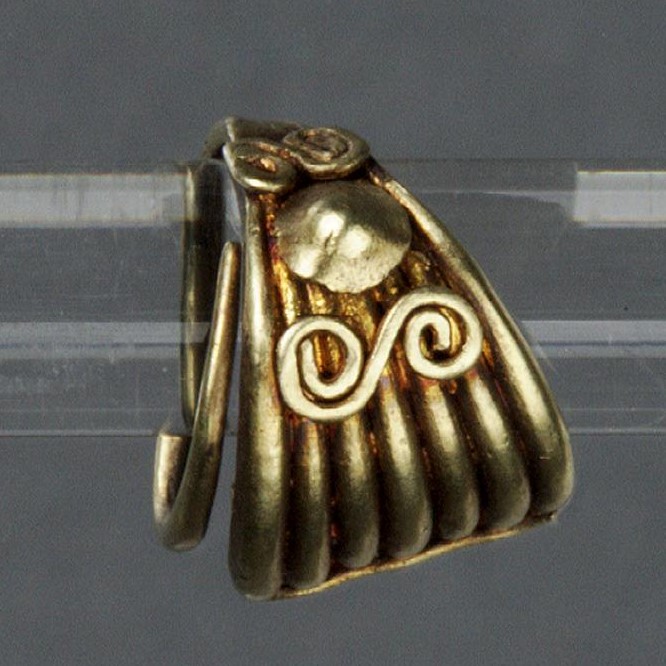
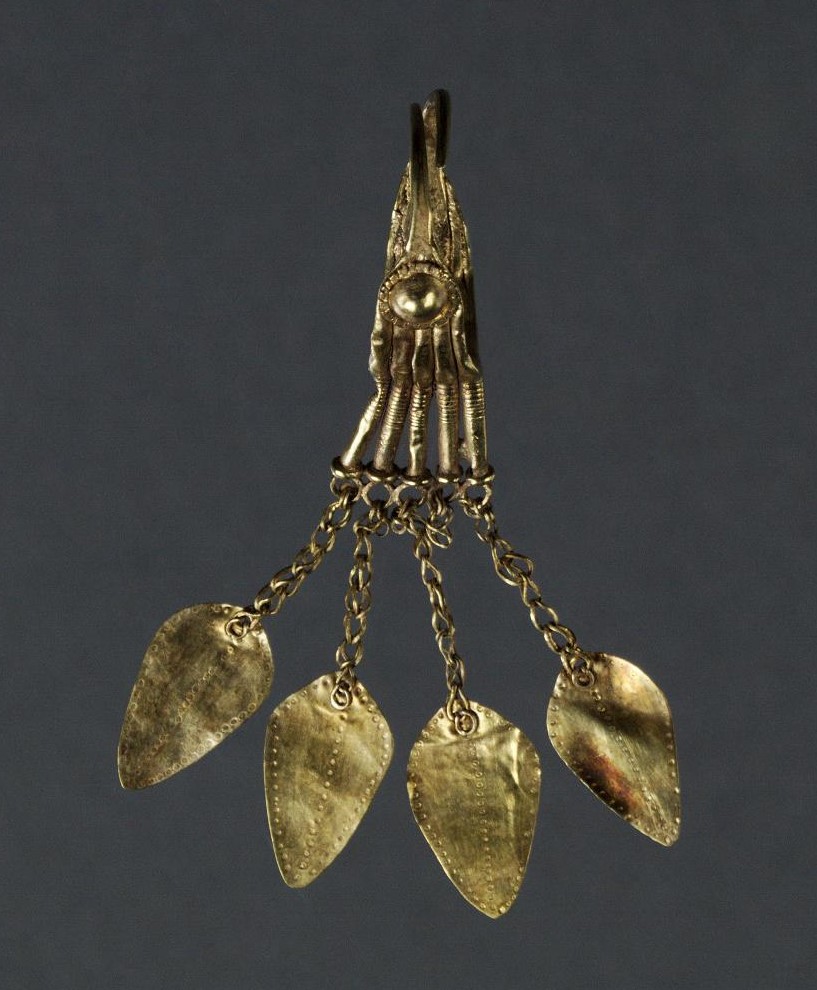
The Cyclades Islands include Paros, where marble is mined; Naxos, with its corundum and emery mines; Milos, where obsidian has been mined since ancient times; and even Thira (Santorini), where pumice is used for finishing and polishing materials.
 |
 |
| S-shaped motif |
Earrings from Northeast Aegean, 2400 BC
Similar to Early Bronze Age jewelry of Troy, Lemnos (Poliochni), and Ur
S-spin refers to a spin direction that follows the central bar of the letter “S”, while a Z-spin follows the direction of the central bar of the letter “Z” in weaving.
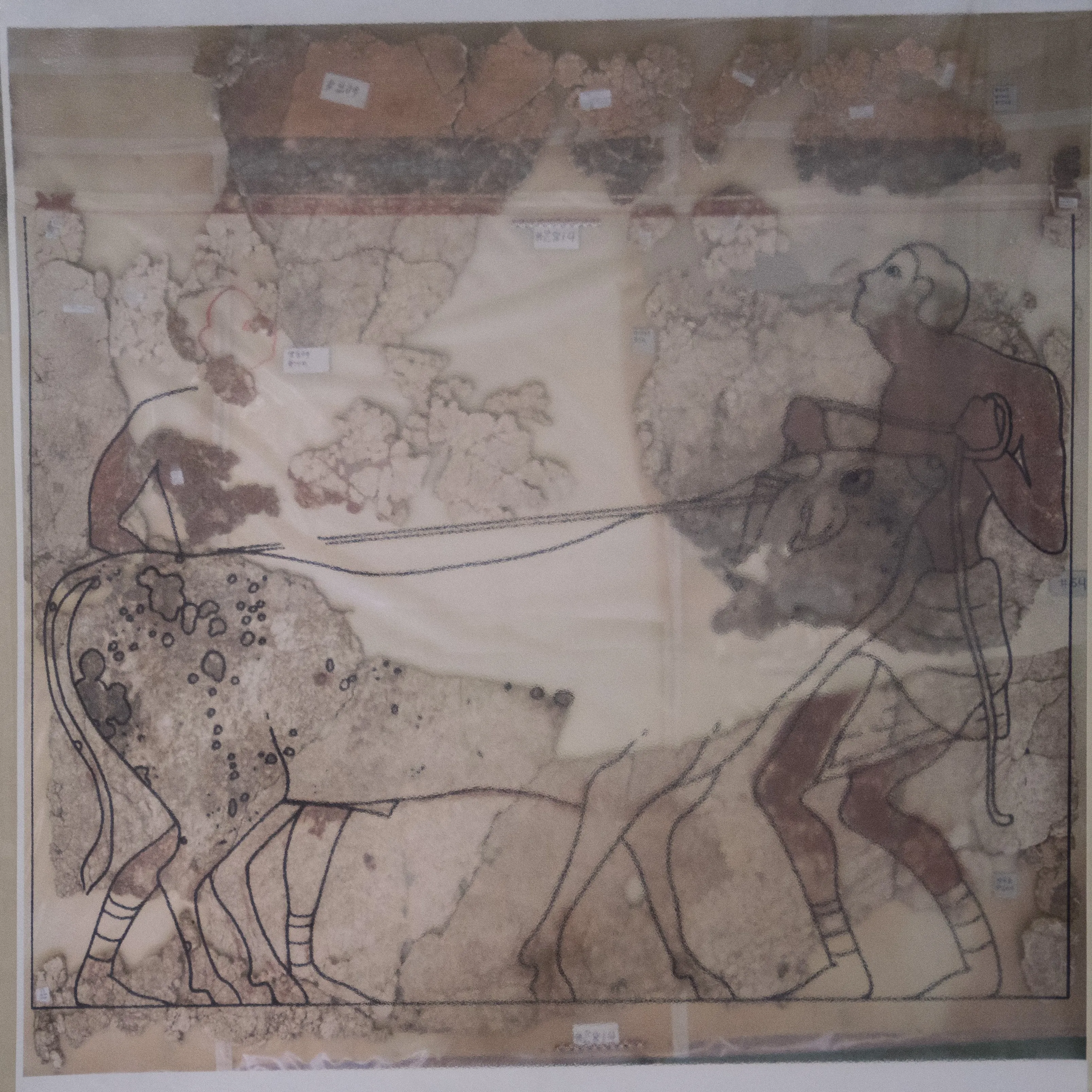 |
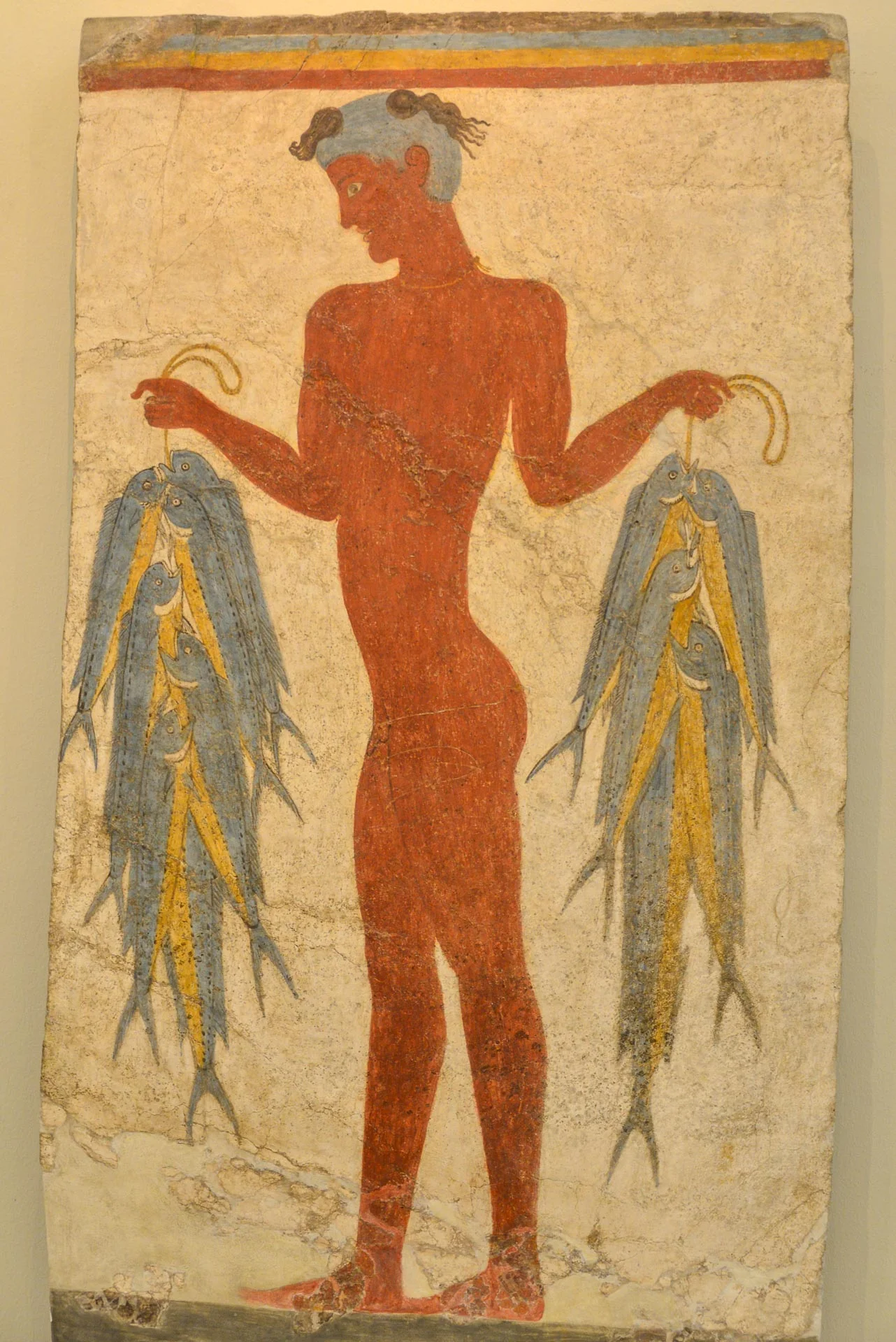 |
Akrotiri Frescoes, Thira, ca. 1600 BC
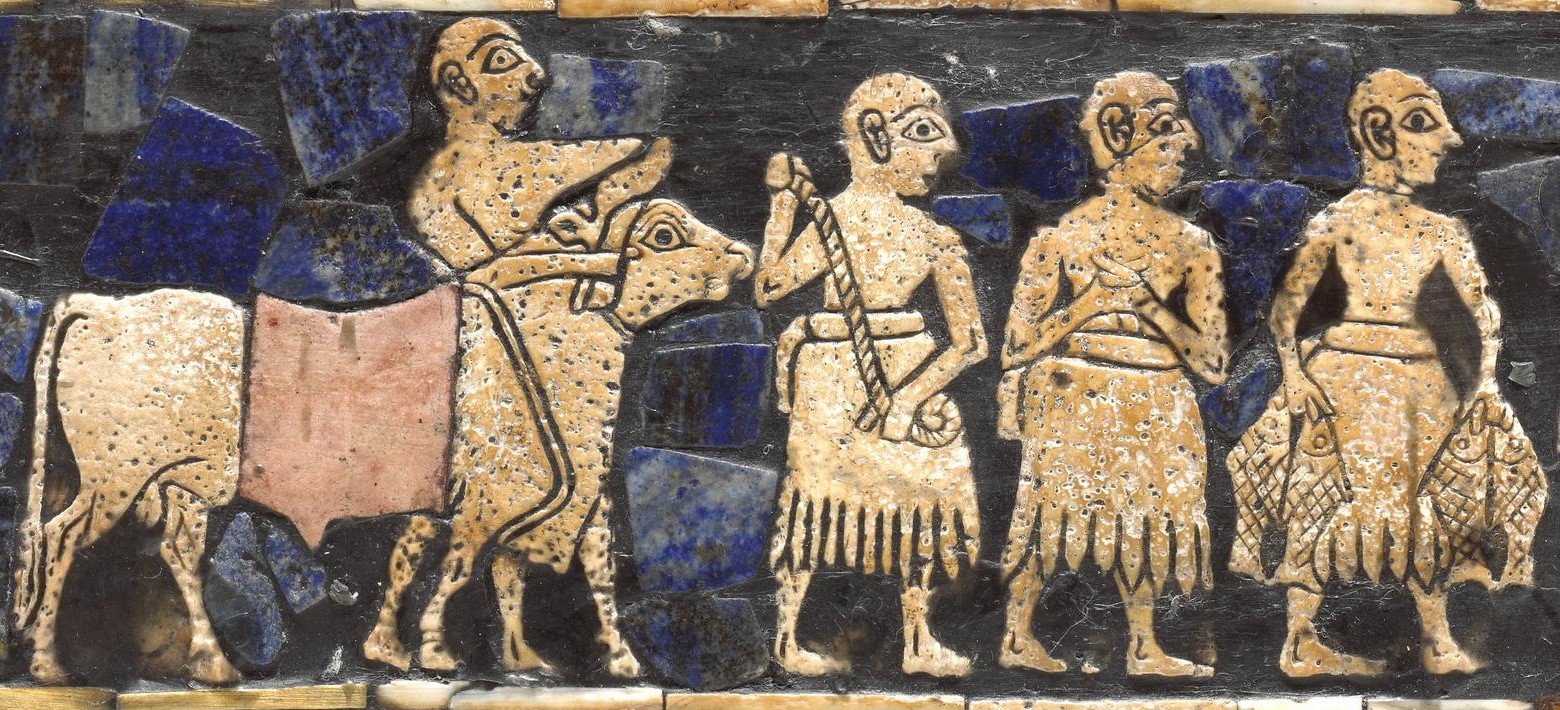 |
| "The Standard of Ur", Ur, 2500 BC |
A small fragment of a red-coloured textile with a faint residue of malachite was found from HK6 (Elite Cemetery) at Hierakonpolis.
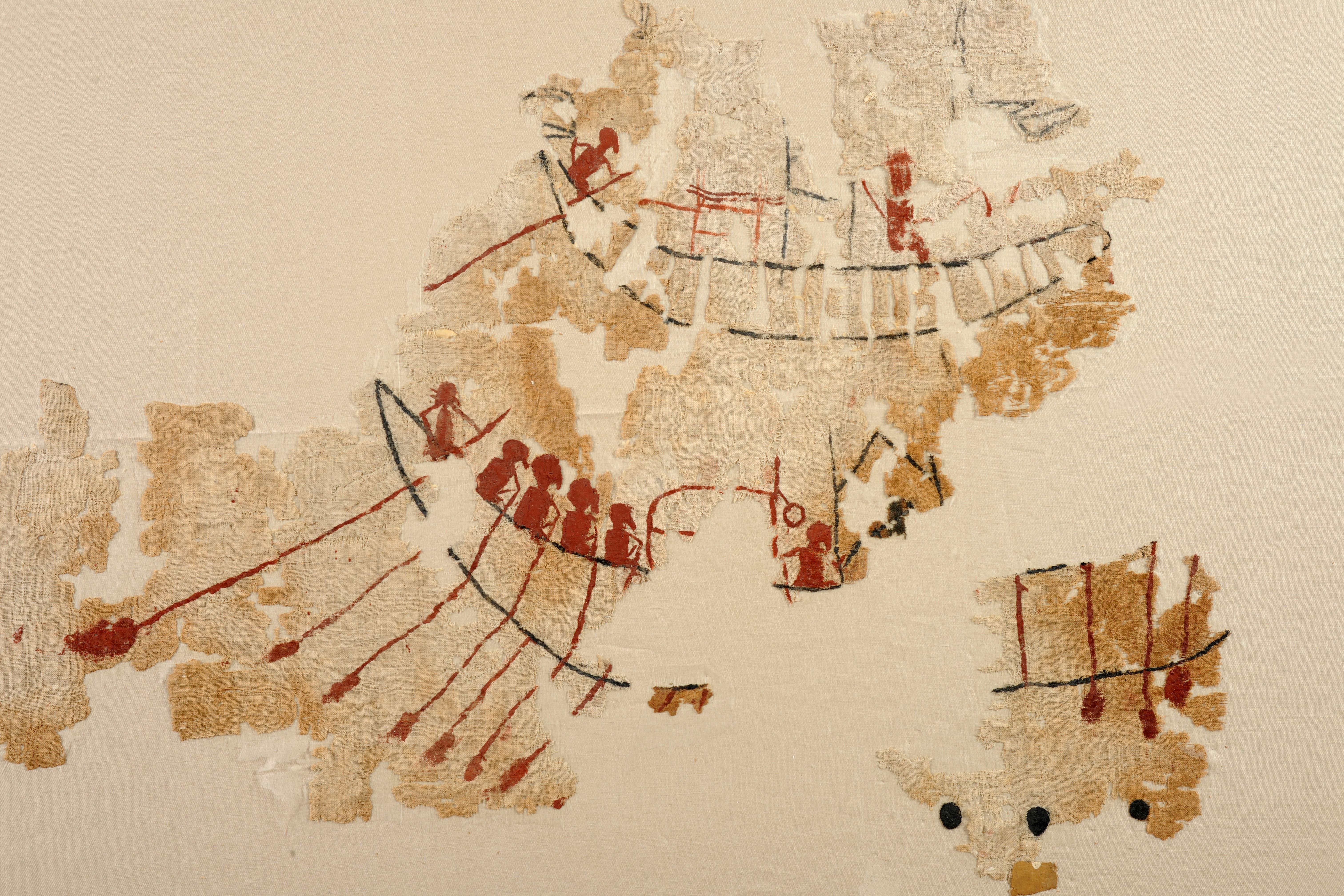 |
| Gebelein painted linen, Gebelein, ca. 3600 BC |
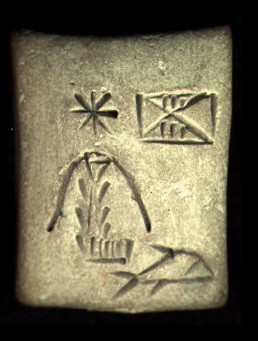 |
| Tag (P002208), Uruk, ca. 3350-3200 BC |
AN |SZU2.EN~a| (cover.lord) DARA4~a1 (red) KU6~a (fish) |
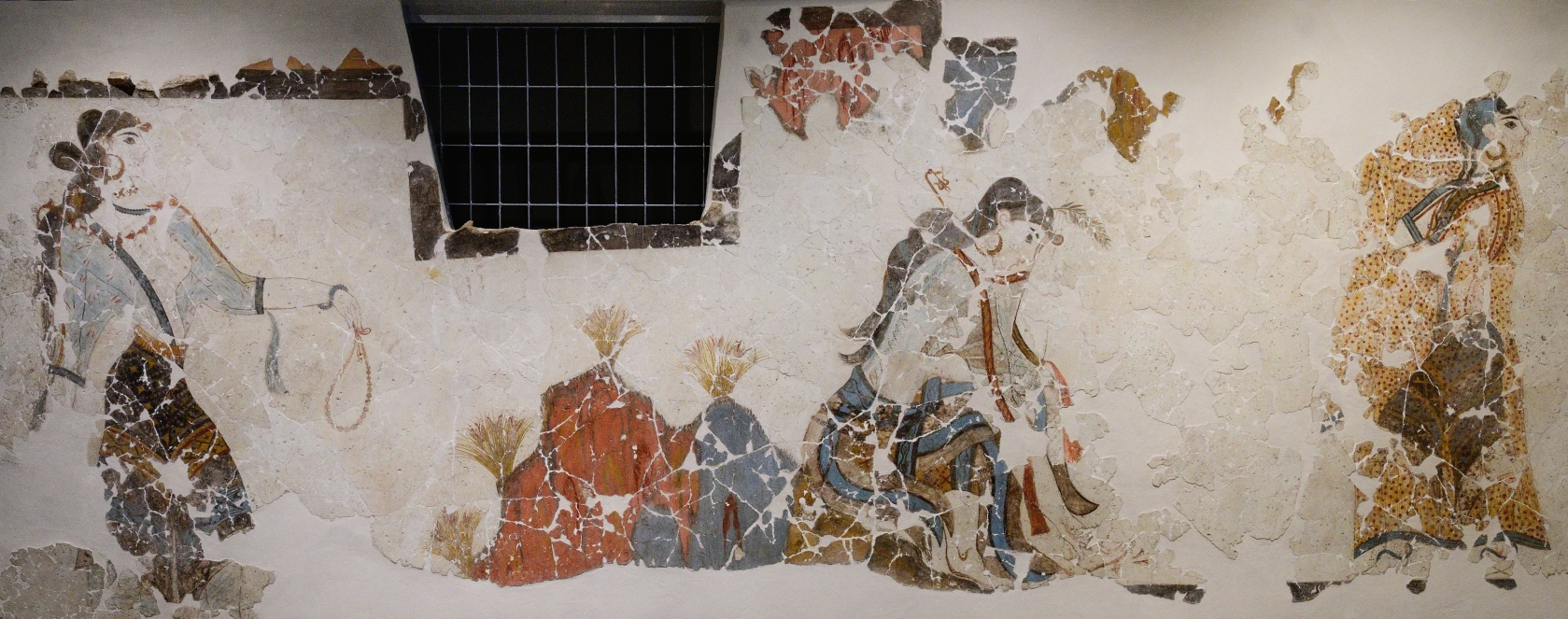 |
| Akrotiri Fresco, Thira, ca. 1600 BC |
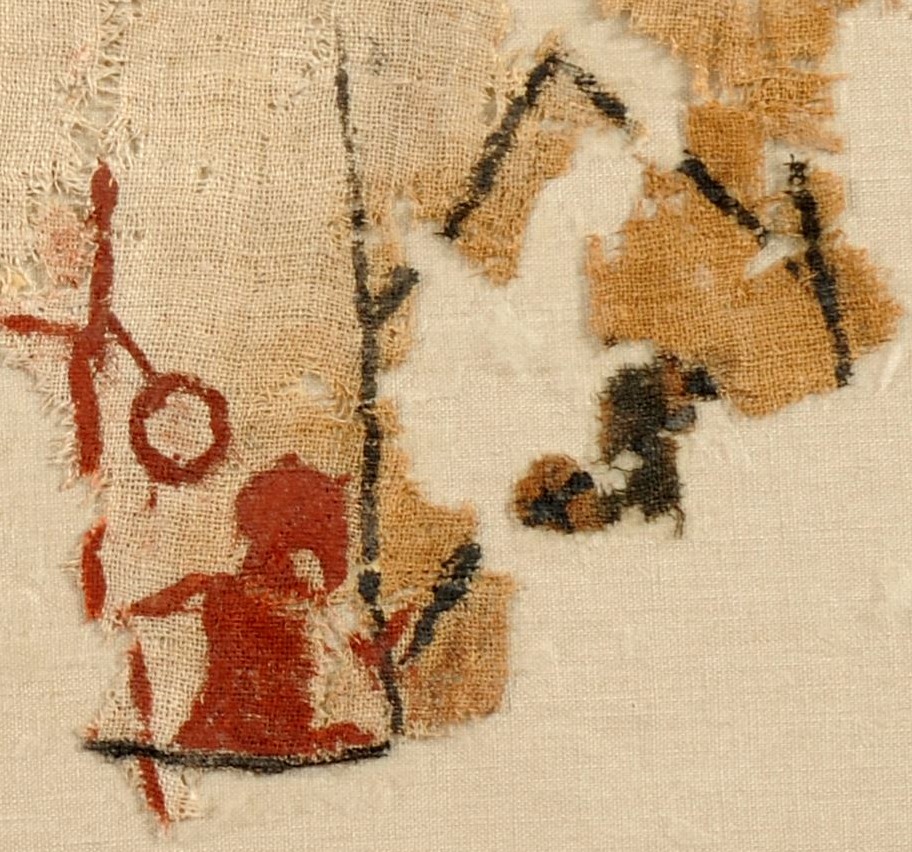 |
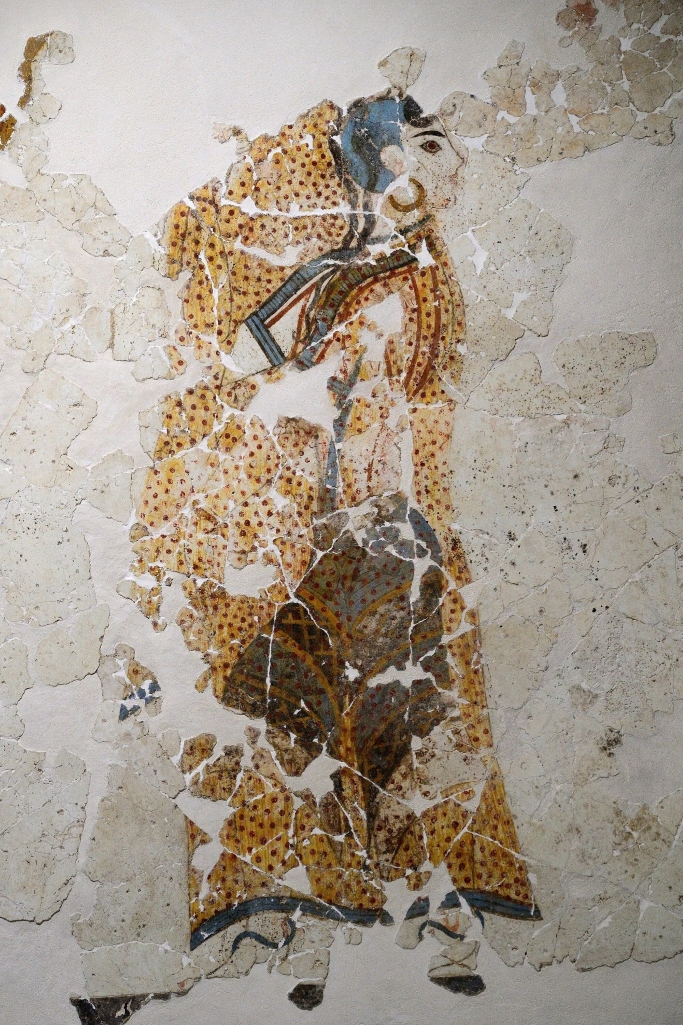 |
| Gebelein painted linen, Gebelein | Akrotiri Fresco, Thira |
"cover" = canopy |
"cover" = textile |
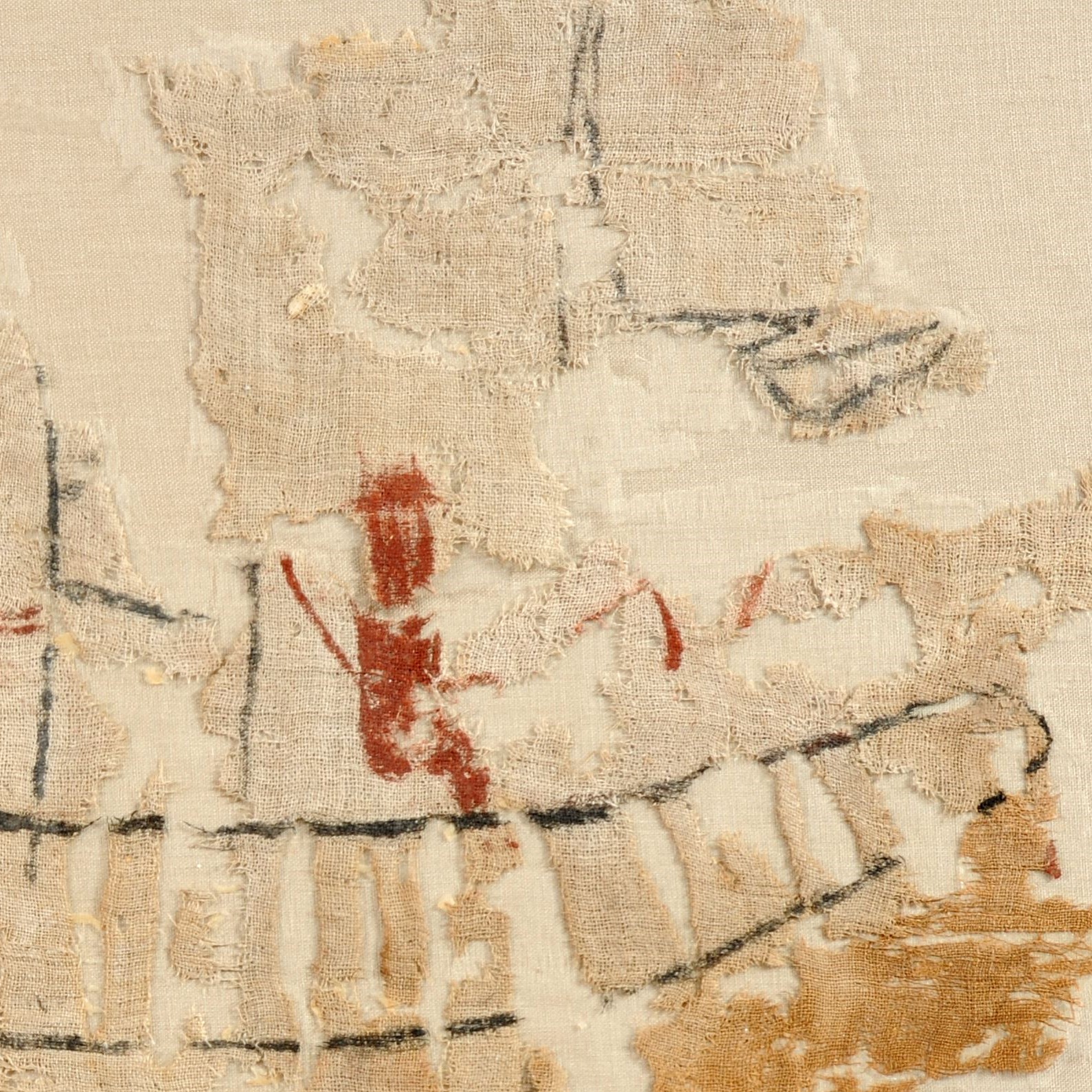 |
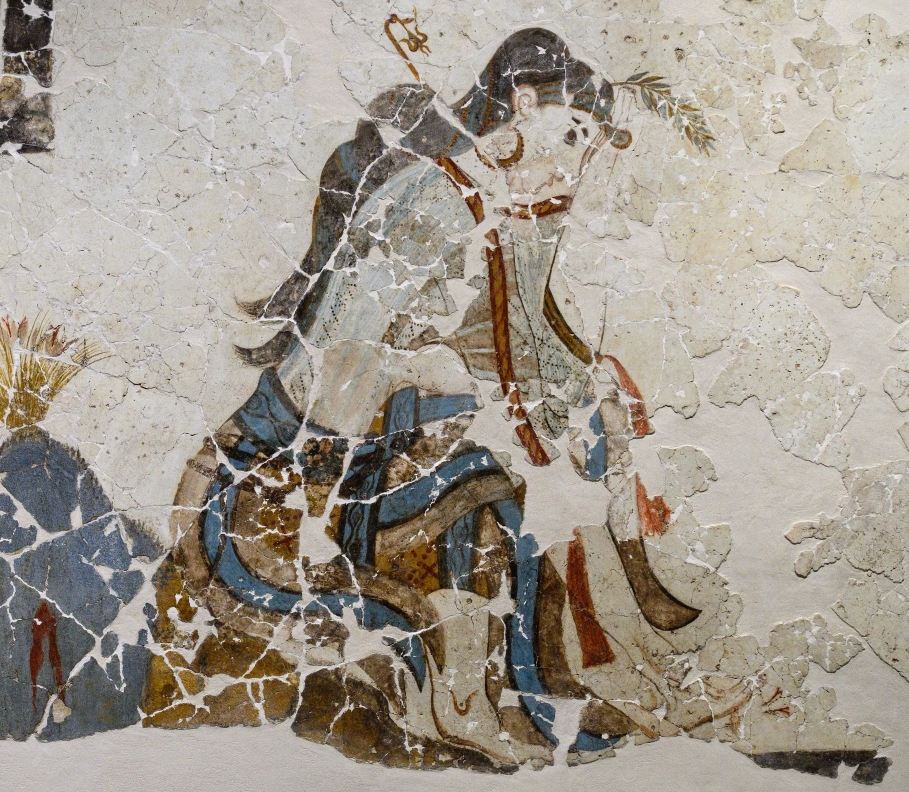 |
| Gebelein painted linen, Gebelein | Akrotiri Fresco, Thira |
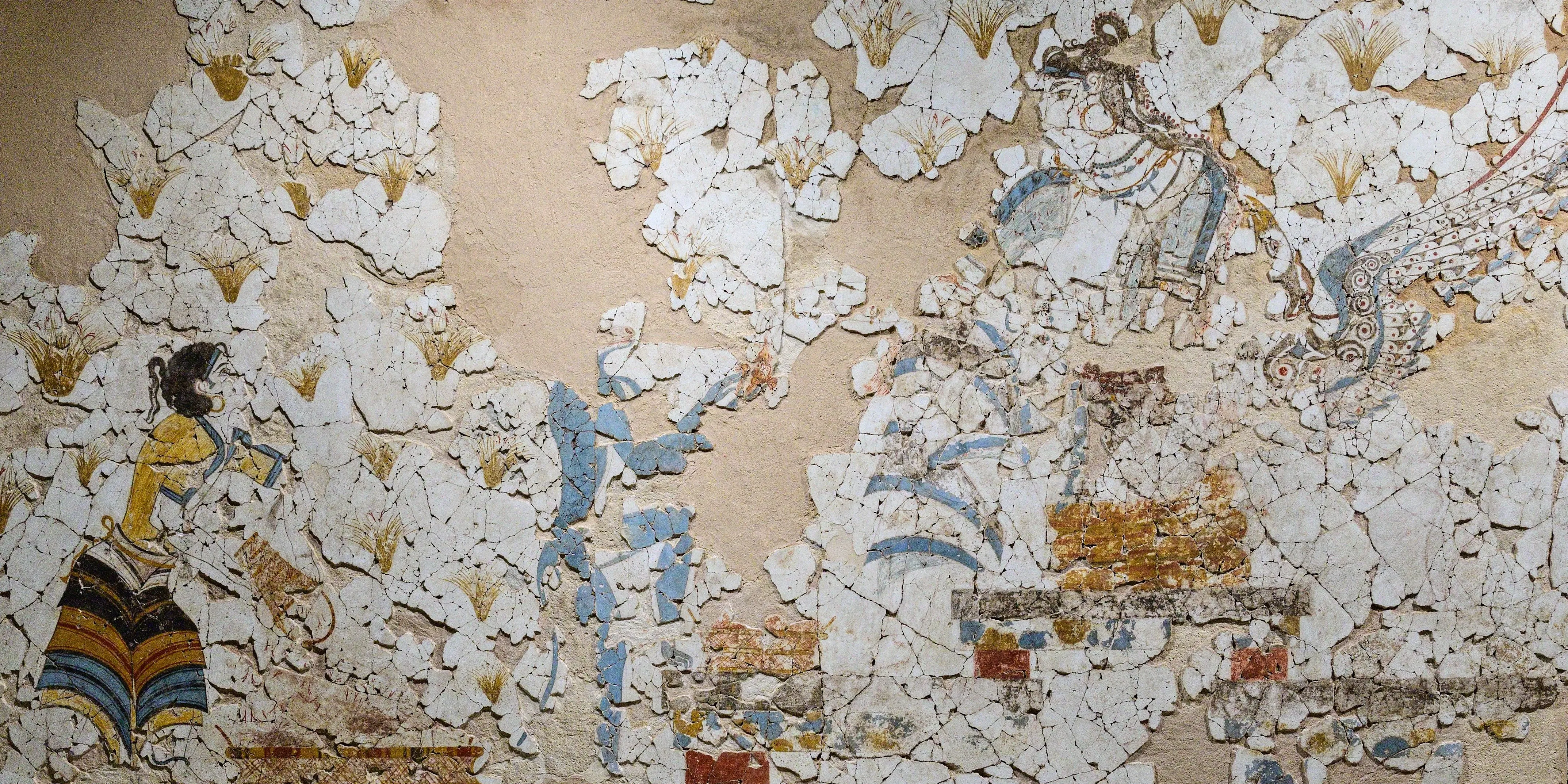 |
| Akrotiri Fresco, Thira |
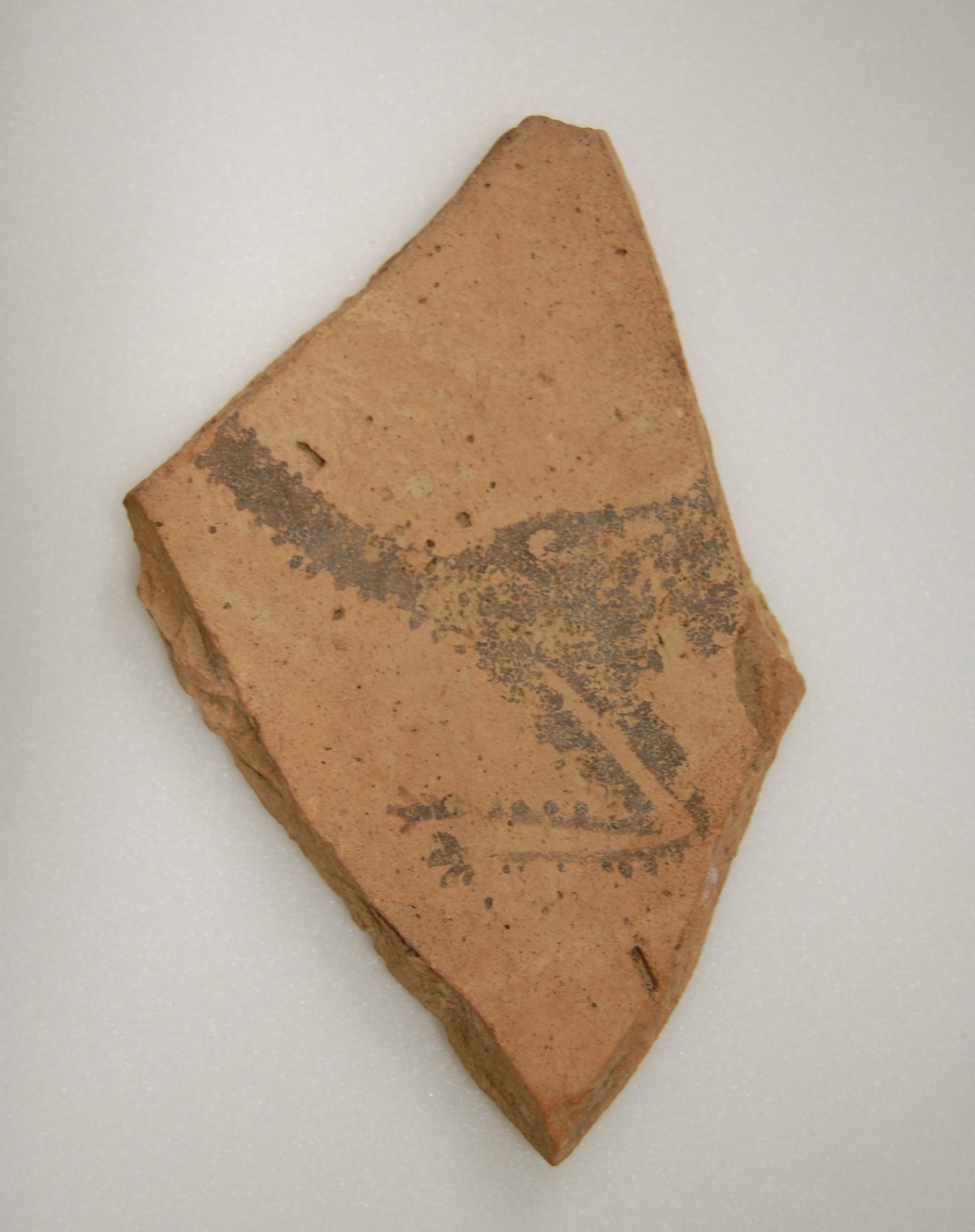 |
| Pottery sherd painted with possibly a monkey, Arpachiyah, 6000-5000 BC |
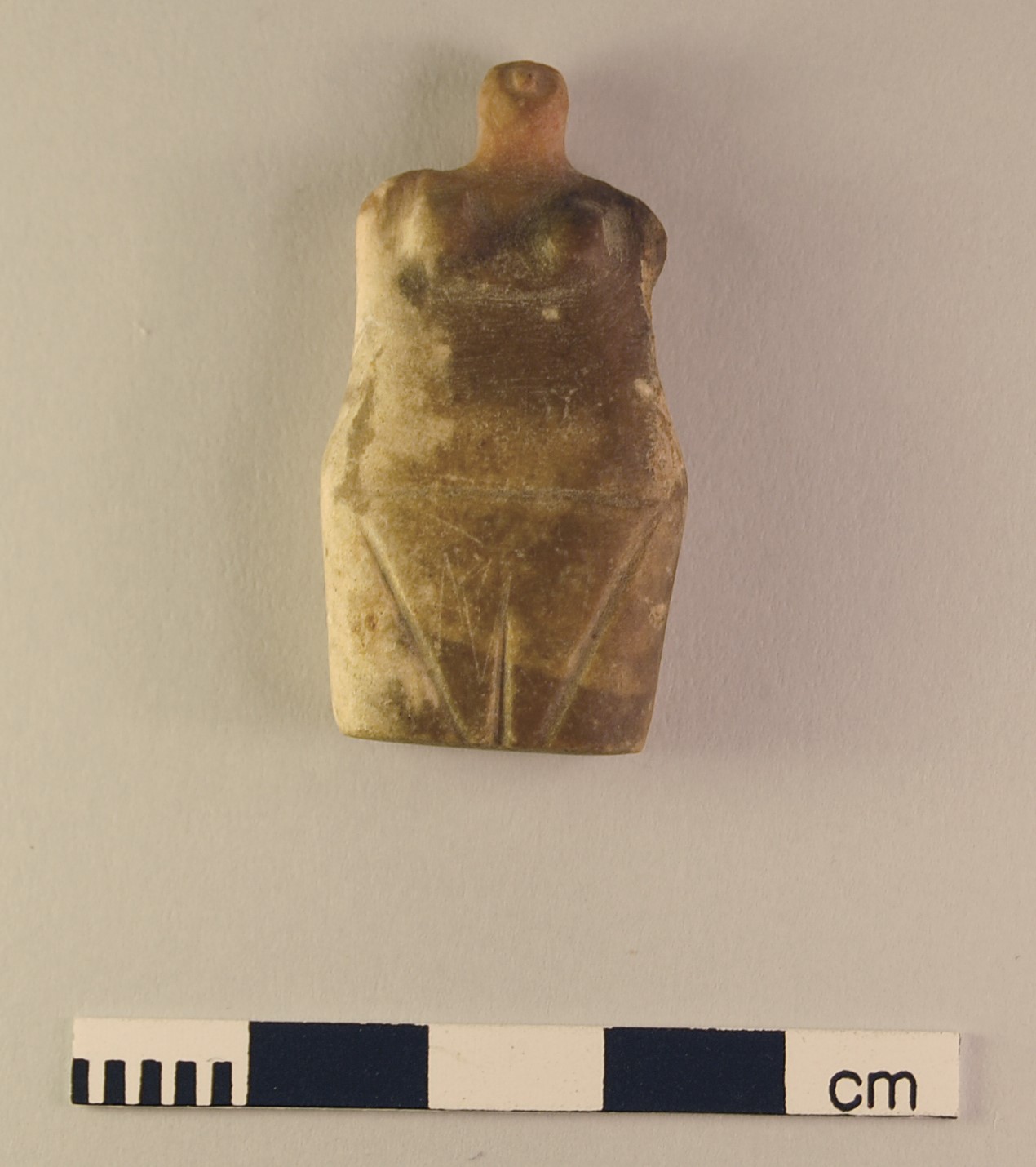 |
| Stone figurine, Arpachiyah, 6000-5000 BC |
Proto-cuneiform SAL 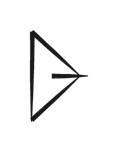 (female, woman)
(female, woman)
References:
https://www.penn.museum/collections/object/2006952025/01/12 Takahiko Nakagawa